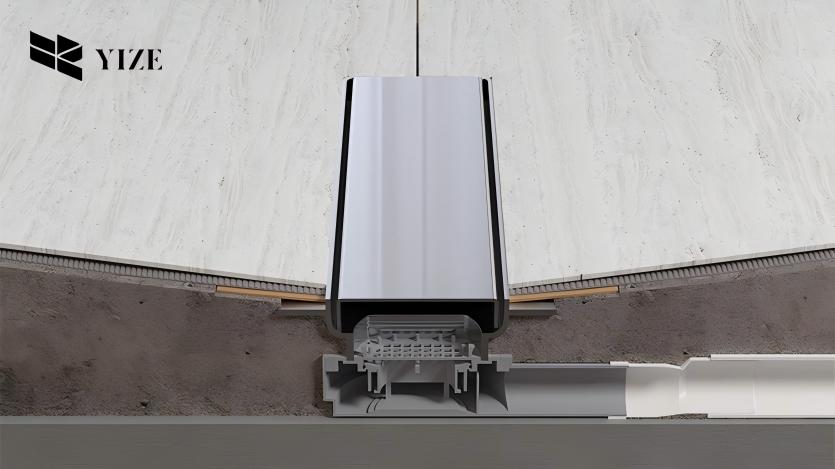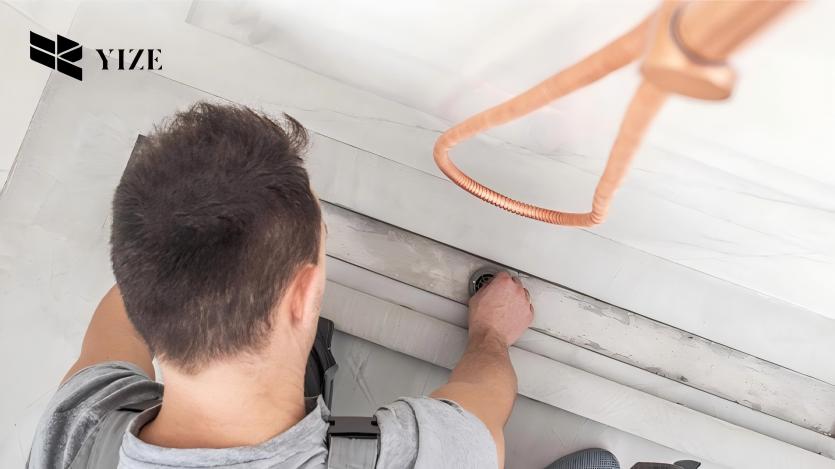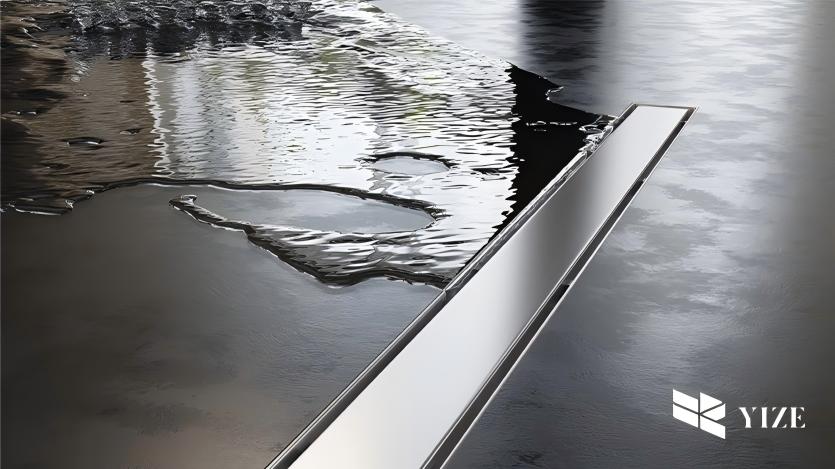
Have you ever stepped out of a shower and found water sitting around your feet like a small lake? You expect a relaxing rinse, not a mini flood in your bathroom. It’s not always a clogged drain to blame. It’s about how the floor is built to guide water into it. The real issue? The linear shower drain installation slope.
When the slope isn’t right, water doesn’t drain properly. That can lead to puddles, slippery tiles, mold and even long-term damage beneath the surface. The good news? It’s an easy fix if you know what to look for. In this article, we’ll explain why slope matters, how to get it right and what to avoid during installation. Read on to learn more.
I. What Is Slope in a Shower Drain?
Let’s start simple. The slope is how much your shower floor tilts toward the drain. That tiny tilt helps water slide away instead of sticking around. Without it, the water doesn’t know where to go, leaving you with puddles, damp tiles, and maybe even a soggy mess later.
Importance of proper slope:
Here’s the deal: water always finds a way. And if your slope isn’t done right, it finds the wrong way. That means:
- Water is collecting in corners
- Slippery floors
- Damp grout lines
- Musty smells
Over time, it can lead to severe damage. We’re talking mold under the tiles, cracked flooring, and even damage to your shower’s waterproofing system. When water starts creeping under the surface, you’ve got trouble.
II. What’s the Ideal Slope?
A good rule of thumb: your shower floor should drop about 1/4 inch per foot toward the drain.
That’s just enough to let water move smoothly without making the floor feel like it’s on a hill. It works in all types of bathrooms big or small, tiled or stone.
Pro tip: Double-check your slope before you install the tiles. Fixing it later? That’s a whole other headache.
III. Why Linear Drains Make It Easier
Here’s where it gets good. Traditional drains? They sit in the center. So, the floor has to slope in every direction. That’s tricky. You’re cutting tiles at different angles and trying to get the slope right around.
But linear shower drains? Game changer. You only need the floor to slope in one direction toward the long, slim drain that usually sits along one wall. It’s simpler to build, easier to tile, and it just looks cleaner. Think of it as modern bathroom magic.

IV. What Happens If You Mess Up the Slope?
Honestly? It’s not pretty. Here’s what to watch out for:
- Water doesn’t drain properly
- Floor stays wet long after you’re done
- Mold starts to grow in corners
- Grout lines break down
- Tiles shift or pop off
In the worst case, water sneaks into places it shouldn’t. When that happens, your bathroom’s structure takes a hit, and boom, you’ve got a problem that can cost big bucks to repair.
V. Common Slope Mistakes: How to Avoid Them
Let’s talk about what people often get wrong:
Flat Floors: No slope means water sits there.
Too Steep: If your floor feels like a slide at the water park, that’s a problem too. Water rushes too fast, splashes, and causes uneven wear.
Guesswork: “Eyeballing it” doesn’t cut it here. You need precise measurements.
Do This Instead:
First, use a level to check that the floor is sloped correctly toward the drain. Don’t just rely on your eyes. Next, pour some water on the floor and see if it flows straight into the drain. If the water moves smoothly without pooling, your slope is good. Don’t start tiling until you’re 100% sure the slope is right. Fixing it afterward is much more complex and expensive.
VI. How to Check If Your Slope Is Working
Is your current shower slope doing the right job? Look for these clues:
- Water stays behind after you turn off the tap
- You see little puddles that don’t move
- Your shower smells musty
- Tiles feel loose under your feet
If any of this sounds familiar, your slope may be off.

VII. Tips to Get the Slope Just Right
Want to get it perfect the first time? Here’s how:
- Plan before you build: Know where your drain is going.
- Slope first, tile later: Don’t rush into tiling.
- Use water to test: Pour a bit and watch it drain.
- Call a pro: If unsure, hire someone who’s done this before.
VIII. Why YZDRAIN Is the Smart Choice?
At YZDRAIN, we know that bathroom projects can feel overwhelming. But with the proper drain system, the job gets much easier. That’s why we focus on creating linear shower drains that don’t just look good, they work even better.
Our drains are crafted from high-quality stainless steel, so they’re tough enough to handle daily use and resist rust over time. We also offer custom sizing, because no two bathrooms are the same. More importantly, our designs are made with proper slope and smooth drainage in mind, helping you avoid those annoying puddles and long-term damage.
IX. Conclusion:
Here’s the bottom line: linear shower drain installation slope isn’t a small detail. It’s a big deal. The proper slope keeps water flowing, protects your floors, and helps your bathroom last longer. Don’t cut corners. When the slope goes wrong, you’ll pay for it later. Ready to upgrade your shower? Visit YZDRAIN today to find the perfect linear drain for your next project.
FAQs
Q 1: What’s the best slope for a linear shower drain?
The recommended slope is 1/4 inch per foot toward the drain. That’s enough to help water flow smoothly without making the floor steep.
Q2: Can a bad slope damage my bathroom?
Absolutely. Water can seep into the floor and walls, leading to mold, tile damage, or even compromising the waterproofing.
Q 3: Are linear drains better for slope control?
Yes! Linear drains only require the floor to slope in one direction, making installation easier and more reliable.
